Mollee Lasto Exhibits Resiliency in the Face of Adversity
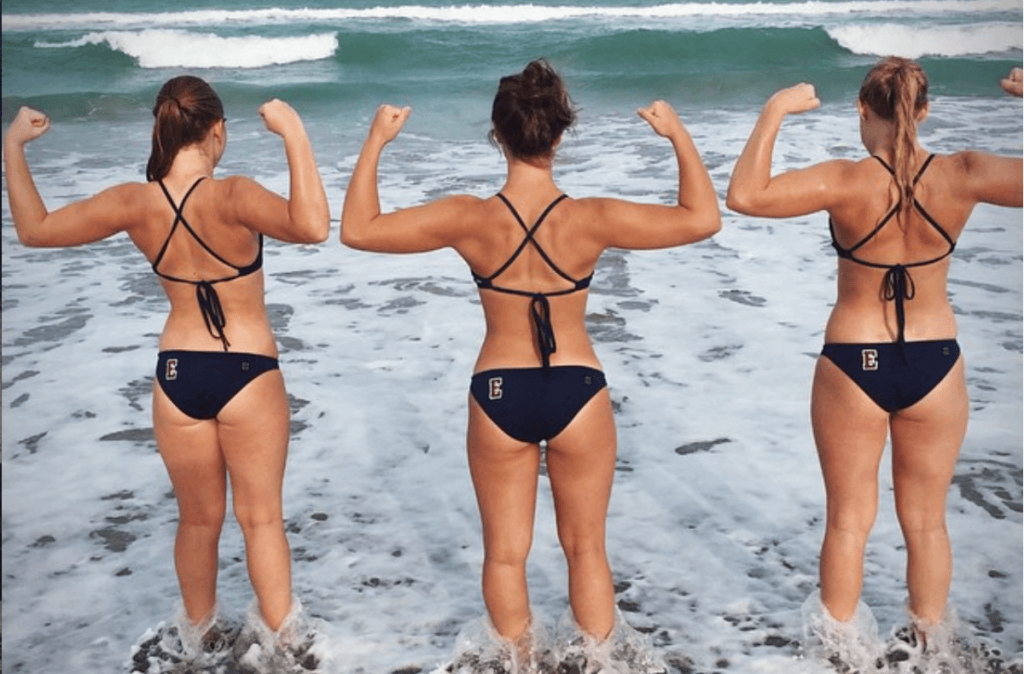
By Maggie Lasto, Swimming World College Intern.
Resilience is a word often tossed around the pool deck, as the demands of the sport require an uncommon strength, both physically and mentally. As swimmers, we encounter challenges often and must work to overcome them. Maybe you didn’t get enough sleep for morning practice; maybe you just missed a time cut you were hoping to make; maybe you are sore and exhausted. Depending on the situation, it may be more difficult to practice resilience; however, with strength, determination and the support of teammates, we can all stare down adversity with confidence. Mollee Lasto is someone who has proved her resiliency many times, and her story is one we all can learn from.
The Beginning
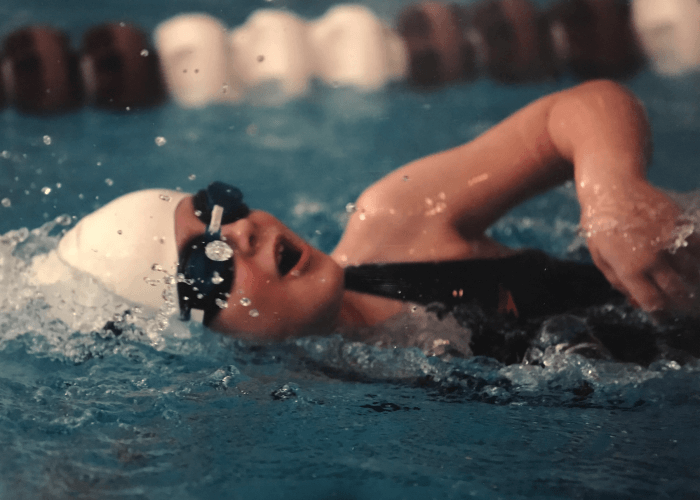
Photo Courtesy: Tricia Lasto
Lasto began swimming at the age of four when she joined the Amity Regional Aquatic Club in Orange, Conn. It was her love for the water at a young age that fueled her passion for the future years. Although she also played basketball and softball, nothing could compare with how much she loved to swim: “It pushes you to be the best person you can be inside and outside the pool. It has taught me that I can do anything I put my mind to and to never give up, no matter what stands in my way.” Although she loved the water, the sport never came easy to Lasto because she was constantly faced with obstacles.
Troubles Arise
At the early age of 12, she started experiencing left shoulder pains. She enrolled in physical therapy, worked on her exercises and took care of her arm by using ice and heat. Feeling recovered, she was ready to get back in the water. But three years later, at the age of 15, the shoulder pains worsened. She ended up needing extensive surgery that included the following: shoulder stabilization, in which the doctors shortened up all her ligaments to tighten her shoulder capsule; the removal of her bursas to get rid of bursitis; and the removal of bone spurs. She remembers her doctor, who worked with the New York Giants, telling her post-surgery: “This was the worst scar tissue I have ever seen.”
This was a tough procedure to recover from during her freshman year of high school, not only as a swimmer but also as a student. She had to keep her arm in a sling for a month after surgery, and being left-handed made it difficult to complete tasks. With her dominate arm immobile, she had to rely on friends to take notes for her and carry her backpack between classes. She struggled to keep up with her homework and exams, and was even given extra written assignments to replace her participation in PE. She remembers feeling tired and stressed, but having understanding teachers made the experience manageable.
More Troubles Arise
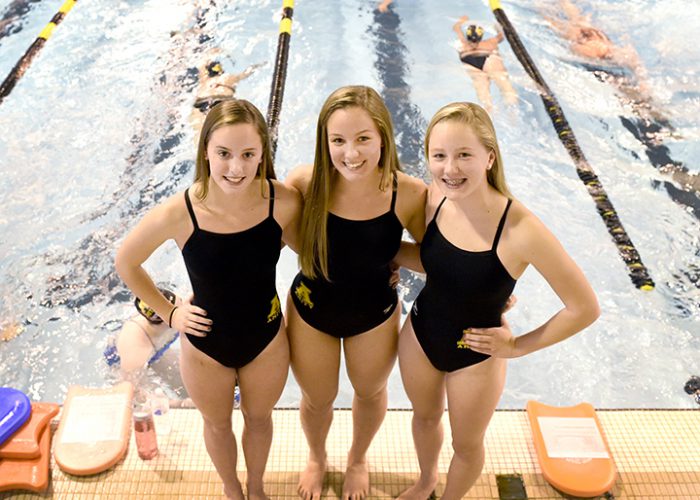
Photo Courtesy: Peter Hvizdak
Fast forward two years: she finds out that she needs the same surgery on her right arm due to a hereditary trait that lends to loose ligaments. Despite all this, Lasto was voted one of the captains of her Amity High School team and led them to a 44-1 four-year record, showing her strength and resilience. She always worked hard at practice and had a great bond with her coaches. Just before leaving for college, her coach Steve, said, “I’m so proud of her. She has overcome two shoulder surgeries, and came back from something so debilitating to continue to be so successful and strong. I am going to miss her so much.”
It Gets Worse
When Lasto began swimming at Eastern Connecticut State University, she was excited to have an injury-free season. But sadly, it wasn’t what she expected. Within her freshman and sophomore years, Lasto experienced spells of nausea, would pass out at random times, feel extreme numbness during and after races, and experienced massive weight-loss. The unknown causes of these symptoms made swimming very difficult and scary at times, and for three years – with the help of her family – she tried to figure them out.
Her days consisted of going to multiple doctors appointments to see cardiologists, endocrinologists, pulmonologists, nutritionists and others. To solve some of these problems, Lasto received a heart implant and fob keychain called a Metronic that she could use to track her heart beat and rhythm, which sent the information straight to her doctor when she wasn’t feeling well. She was also given different inhalers, medications and meal plans to try.
Progress
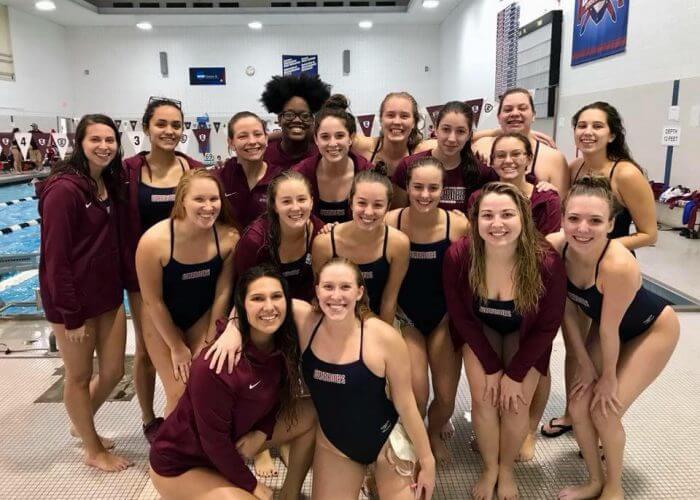
Photo Courtesy: Maureen Fahey
Finally, just this month after going though all these tests, her doctors have figured out the causes of her symptoms. When asked about what it was like to swim with these struggles she said, “It was very difficult, and at times I wanted to give up. There was pain, frustration and disappointment, but I didn’t want to let go of something that I loved so much. There were times at practice when I would cry in my goggles because I didn’t want anyone else to see. I was often in pain or sad at meets because I added a lot of time due to feeling dizzy and fatigued, but my coaches, teammates and family helped push me to keep going.”
Knowledge
Lasto has recently been diagnosed with a heart arrhythmia and sinus tachycardia that causes her heart rate to increase irregularly. At the same time this happens, her blood pressure drops due to abnormal dysfunction, which results in dizziness and fainting. She has also been diagnosed with hypoglycemia, which causes her blood sugar levels to drop very low when she eats certain foods like carbohydrates. When this happens, she begins to feel dizzy and lightheaded again.
To cope with these difficulties, Lasto must keep track of everything she puts into her body and pay attention to the way she is feeling at practice. Now that she knows the causes of her symptoms, she feels relieved. She says, “I started doubting myself, thinking that I was being a baby and that my symptoms were all in my head. Finding out that I was right about how my body was feeling made me want to work even harder to get back to being the swimmer I used to be.”
Empowerment
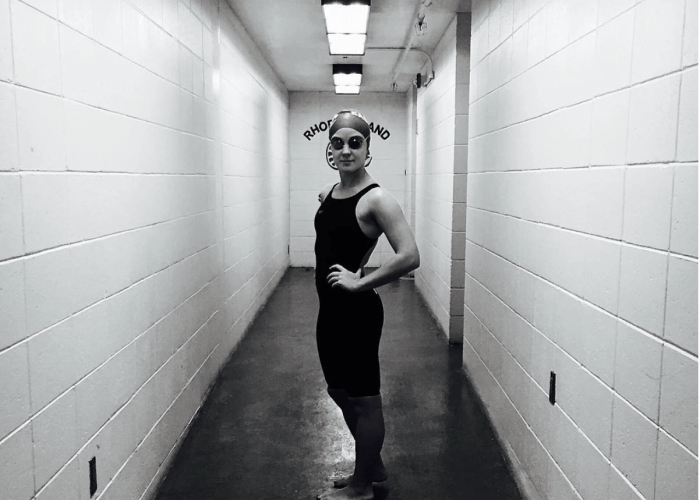
Photo Courtesy: Mollee Lasto
Despite all this, Lasto broke Eastern’s 50, 100 and 200 backstroke records in her sophomore year and re-broke all three records as well as another relay record in her junior year. One thing she emphasized was this: “It’s important to remember why you started something and never lose sight of where you want to go, because anything is possible.”
This current season, she was voted captain of her college team and is hoping that with her problems resolved, she can finally have the season she has been waiting for. She has proved that if you work hard at practice day in and day out, nothing can stand in your way. Having shown resilience more times than most other college athletes, she is a prime example of how toughness can be so powerful. She overcame her setbacks, sickness and injuries and turned them into a very successful college career.
Lasto’s story is one of resilience in the face of adversity. May we all rise to beat whatever challenge comes our way and say, “If she can do it, I can too.”
All commentaries are the opinion of the author and do not necessarily reflect the views of Swimming World Magazine nor its staff.




Maggie, once again, way to point out a story that I only assume so many athletes can relate too! Nice Job!